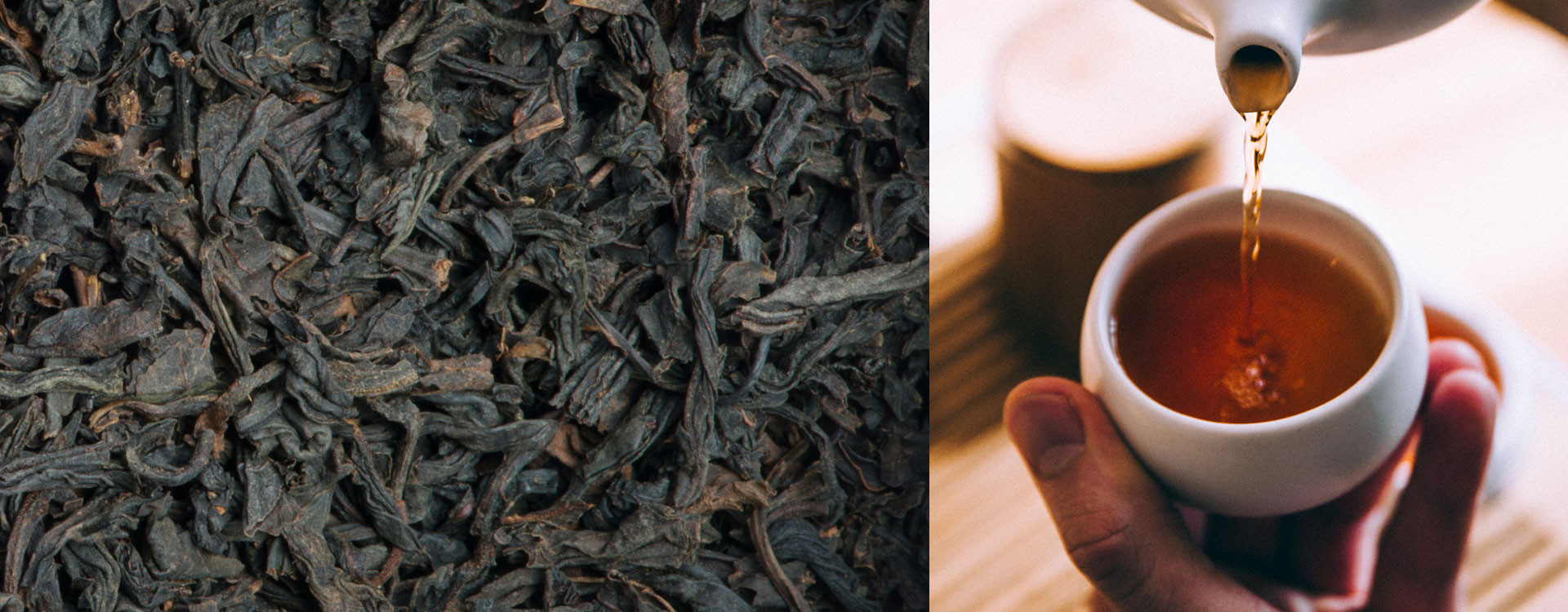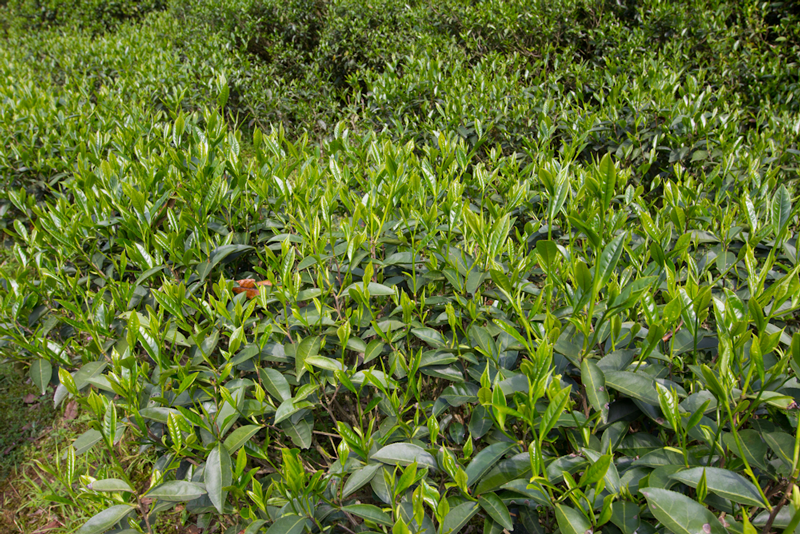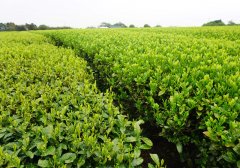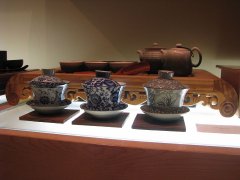Flavor characteristics of Zhengshan race black tea Zhengshan race is high-grade tea recommended by ten famous brands
What is a race?
In the West, there is a traditional misunderstanding of the word "race", which is regarded as a kind of tea with thick leaves or large leaves. As a result, the West continues to use the term as one of the grades based on leaf size or appearance, although it is not often used now. The original meaning of the word "race" is just the opposite: leaflet variety. It actually refers to a variety of tea that has existed in Fujian since 1717, before the emergence of the first kind of black tea. In the traditional production of Kungfu Tea, race refers to a set of processing steps using Xiaozhong varieties of tea.
What does Masayama mean?
The word "Zhengshan" is the Romanization of the word "Neishan" in Fujian dialect, which refers to Xingcun, the origin of tea, which is hidden in the depths of Wuyi Mountain. The Romanization of Zhengshan race is "inner mountain small middle school" in modern Putonghua. The original purpose of this name is to distinguish the real product from the "outer mountain small middle school" in the neighboring areas. Later, it evolved from "Neishan" to "Zhengshan", which is now called "Zhengshan race" in Chinese. The real origin has expanded from this deep mountain village to other areas of Wuyi.
Wuyi had this tradition of naming black tea before it appeared. Wuyi Oolong has always been called "Zhengyan", and the word "Zhengshan" is the same as "Zhengshan". "Yan" means "boulder", especially the height of the mountain. So tea from real rocks, or real mountains, should be much better.

However, Wuyi is only one of the many key production areas with a good reputation, and neighbors want to follow suit, whether in the original village or outside the county. Among all the famous black tea producing areas in Fujian, it is just one of them, the famous Minhong area, which also produces their own versions of Xiao Zhong.
Smoking with pine is only one of the "Zhengshan races".
Looking back to the early tea list in London, it is clear that tea customers at that time only knew a kind of black tea called race, and did not further specify where it came from. And all the other Suzong people have not been smoked. Therefore, in the absence of other reliable references, we have reason to believe that the vast majority of Xiaozhong products are regarded as general-purpose products, and most of the slight differences in quality of origin are only for businessmen (or only importers and exporters. There may be a few tea drinkers). Thus it can be seen that the tobacco flavor characteristics of Zhengshan race are different from its original intention. It doesn't matter whether the heavy smell of smoke, like all kinds of legends, enters the tea intentionally or accidentally.
This is in line with the tradition of today's producers: they use high-quality harvests to produce most clean varieties, especially better ones. A large number of smoking versions are made by mass market quality chapei (tea germ that is tea smelled) from neighboring areas. Most of them are far away from Wuyi. A large part of it is smoked with additives, not pine. Almost all of this is for export.
Others also make smoked tea, but it's not that strong.
However, the smoky taste of tea is not unique to Wuyi. As mentioned in other articles, such as in Huangshan Maofeng, the use of high calories, therefore, smoking firewood is also very common in Huangshan area. However, smoked characters are never as powerful as smoked mountain races.
The strength of this character puts the smoked Zhengshan race in a unique position in the taste spectrum of all teas. Some people say it's a man's tea, better than whiskey. Maybe this kind of tea and tobacco is more popular than whisky, maybe on the contrary. The point is, not everyone likes it.
Taste characteristics
In addition to the often described dry taste of longan, the better version does have an accent, and even the best smoked mountain races on the market have quite a lot of tannins and relatively rough. Maybe that's why some people describe it as a man's tea, with some kind of gender role hypothesis.
In contrast, in the traditional Kung Fu Xiaozhong tune, the "longan" accent is more rounded, fuller and has plenty of floral tones in the symphony. However, I have to say that no matter what people call this flavor element "longan", it is also part of some other Chinese black teas, such as the delicate Dianhong. The appearance of "longan" in the clean Zhengshan race is a more popular mention, and I think there are several other reasons:

Darker tea is associated with dried longan
A slightly scorched taste that dries the tea and is associated with dried fruit
Other flavor elements are slightly thin, such as malt, floral and aroma, which complement its attention.
All traditional Xiaolong buns go through an extra step, that is, after "fermentation", they are baked at a temperature of about 200 °C, and then twisted more closely. In Wuyi area, most tea production uses high temperature, which has become a symbol. This inevitably contributes to the first two reasons. Third, the leaves of modern hybrid Xiaozhong varieties are born with better strength after fully "fermenting", but are thinner elsewhere.
Tasting characteristics
For the price difference, it is understandable that when the smoked version is brewed to a good strength, it is not as good as a "clean", traditional Kung Fu small chong version. However, it is still a good character tea. If there is milk and / or sugar in the recipe, it is delicious to make it thicker as a very good tea. Like other broken black teas, use water close to the boiling point.
As for the whole-leaf Zhengshan race, 95 °C is fine. If you are after the taste of longan, try to soak with more leaves and shorter time, especially in the first round, say 2-3 minutes. You won't waste tea, because you can make it again.
Important Notice :
前街咖啡 FrontStreet Coffee has moved to new addredd:
FrontStreet Coffee Address: 315,Donghua East Road,GuangZhou
Tel:020 38364473
- Prev

Traditional Japanese top green tea is Uji green tea Japanese green tea why is broken how to drink?
Yuji Yulu, steamed green tea Origin: Kyoto, Japan Yulu, also known as Yulu, is a special quality of steamed green tea (i.e., fried tea) name, originated from the southern part of Kyoto Yuji. This class has different quality grades. Producers name them poetically rather than numerically, such as crane, pine, purple cloud, etc. Production area Currently, Uji, Shizuoka and Fukuoka prefectures are Japan
- Next

Chaozhou Kungfu Tea tea set introduction what tea set Kungfu Tea uses to drink Kungfu Tea step teaching
According to the Collection of Purple Medicine in the Geography of Chaozhou, people in Chaozhou love to drink tea. they make their own tea, which is called Kungfu Tea. Yuan Mei lived in the Qing Dynasty vividly describing the ancient customs of tea tasting will be in his food Yuan Mei's list, cup small walnut, pot small round bergamot, each cup of tea people do not want to drink, taste perfume first, taste second, slowly chew it, feel, its most mellow taste and
Related
- The milk tea cup becomes smaller?! Overlord Tea Girl launches a new "Return to Yunnan" series
- Accused of selling counterfeit and high-priced coffee beans! Well-known boutique coffee brand "Oukelao" bowed and apologized!
- How to make espresso dumplings? Can I eat coffee and glutinous rice balls together?
- Save the unformed and stagnant powder cakes in one second! What is the problem with stagnant water in the powder bowl of the espresso machine?
- What does hand-brewed coffee stop mean? Why is it not recommended to make coffee by hand?
- Is it normal to smell like coffee? Why does coffee smell like alcohol? What's wrong with the strong smell of cold extract ice dripping ice brewed coffee?
- How to solve the problem that hand-brewed coffee extraction takes too long? Why is the water flowing so slowly when making coffee?
- The main points of making Australian white coffee, the proportion details, how does Australian white properly foam and blend the flowers?
- Can ice water make cold extract coffee? What is the difference between room temperature water and ice water for making cold coffee?
- What milk is best for making latte and white Dirty coffee? What is the difference between different brands of fresh milk and pure milk for making coffee?

